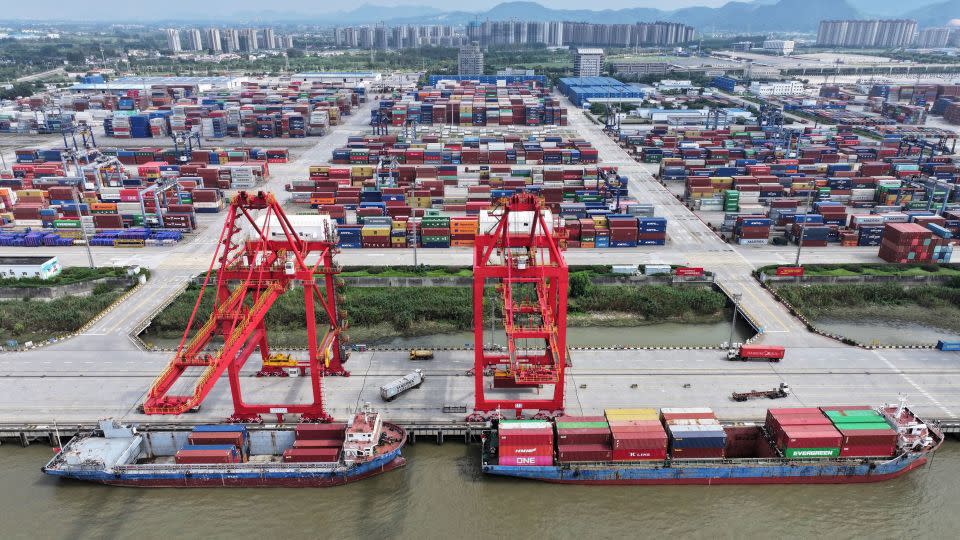China’s exports rise for the first time in six months, but won’t boost slump in the economy
China’s exports increased for the first time since April, while imports inched downward, data from the world’s second largest economy showed on Thursday.
Exports in US dollar terms rose 0.5% in November from a year ago, reversing a 6.4% decline in October, according to the General Administration of Customs. Before this uptick, exports had dropped for six months in a row due to subdued global demand.
November’s surprise increase was partly thanks to seasonality, as exports are usually stronger ahead of the year-end holiday season. The spread of Covid-19 infections in November last year had also disrupted trade with the rest of the world, driving up this year’s headline numbers.
“The turnaround of China exports growth posed a positive signal for China’s recovery,” said Ken Cheung, chief Asian foreign exchange strategist at Mizuho Bank.
But it’s unclear if the momentum can be sustained, especially as imports unexpectedly dropped in November, pointing to lackluster domestic demand.
Imports in US dollar terms were down 0.6% last month, reversing a 3% increase in October, according to customs data. It missed a 3.3% rise forecast by a Reuters poll of analysts.
Consumption will likely remain sluggish. Consumer prices fell back into deflation in October, marking the second time they have slipped into the negative territory this year. It is a sign that consumers are wary of spending amid an economic slowdown.
Analysts also said the strength in exports is not sustainable.

“Looking forward, the resilience of exports is unlikely to last,” said analysts from Capital Economics.
They said the November growth is partly fuelled by exporters slashing prices to gain market share, a strategy that is unsustainable.
“Without the support of price cuts, exports are unlikely to defy the slowdown in growth among China’s major trading partners, which we expect to continue in the first half of next year,” they added.
In the first eleven months of 2023, China’s exports fell 5.2% from a year ago.
Shipments to the European Union and the United States dropped 5.8% and 8.5% respectively, and the data won’t improve significantly in the coming months, analysts said.
“The European and US economies are cooling. China still needs to depend on the domestic demand as the main driver for growth in 2024, “ said Zhiwei Zhang, president and chief economist for Pinpoint Asset Management.
The uptick in exports comes at a time when China is grappling with a number of economic problems, including property weakness, high debt levels and falling consumer prices.
The World Bank and the International Monetary Fund have cut China’s growth forecasts to 4.4% and 4.6%, respectively, for next year. On Tuesday, Moody’s downgraded its outlook on China’s government credit ratings and says it expects the country’s GDP growth to slow to 4% in both 2024 and 2025.
For more CNN news and newsletters create an account at CNN.com
